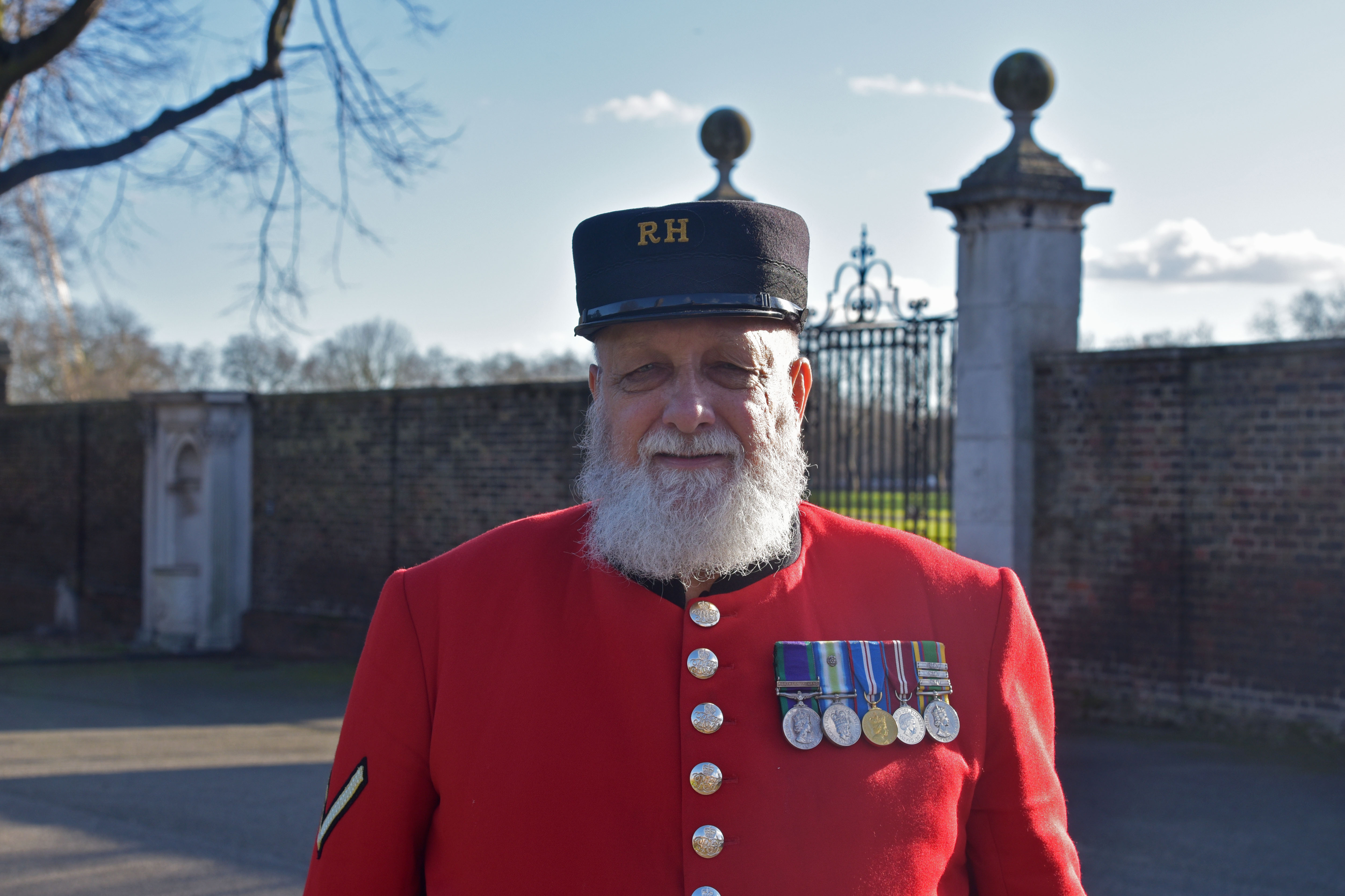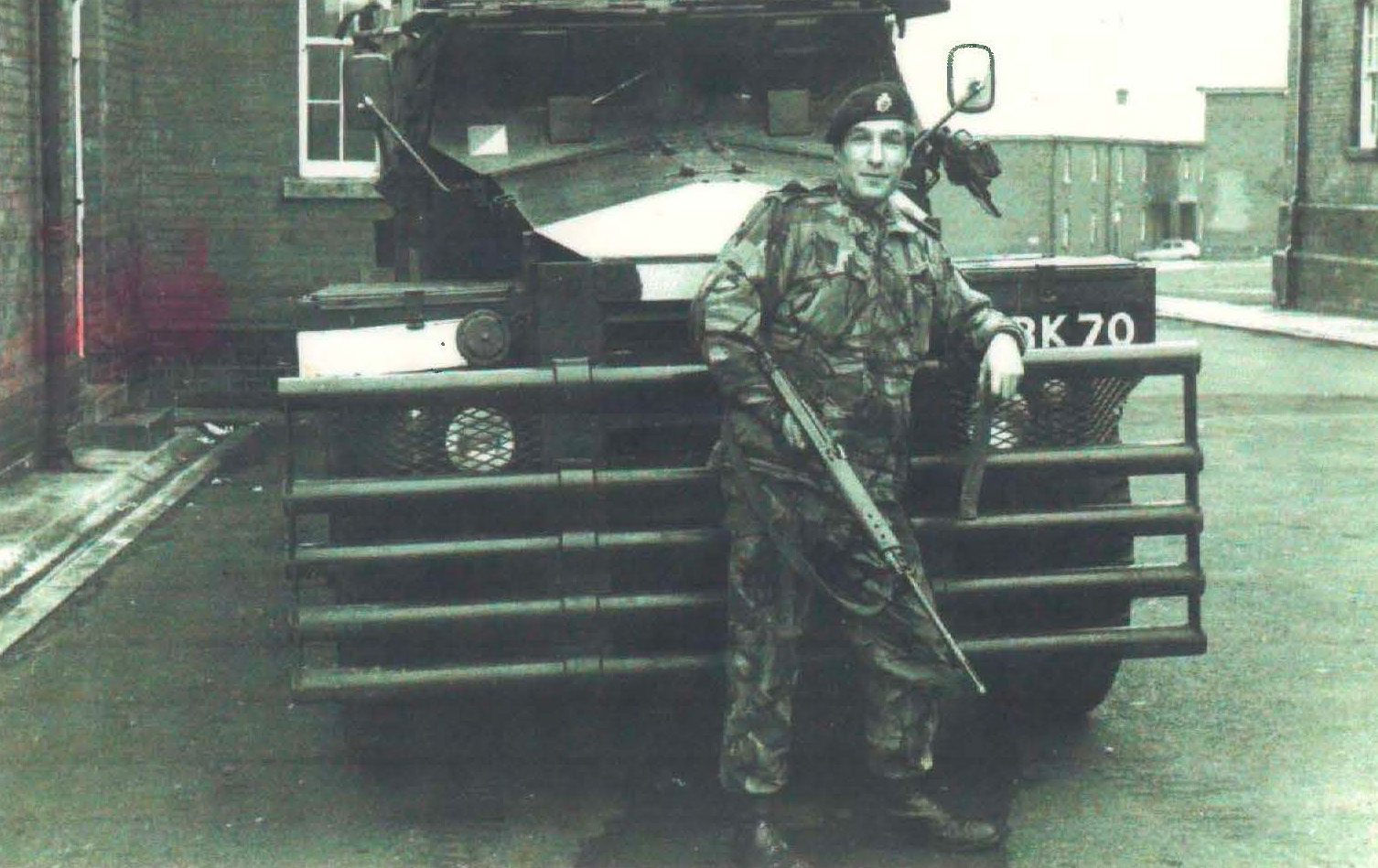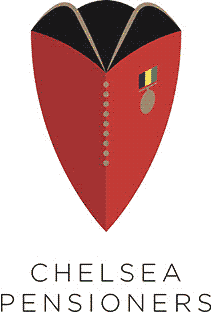A Pilgrimage to the Falklands
21st February 2024

Starting out in the Army
In 1972, Peter joined the Army at the age of 18. Joining the Royal Corps of Transport, he completed his initial training at Buller Barracks in Aldershot.
“I got my training at Buller Barracks. After that, I was posted to 8 Regiment RCT in Munster, Germany. I was there for three years. During that time, I did two tours in Northern Ireland and a battle group in Canada. In 1975, I was then posted to 44 Squadron at Deepcut. We mainly did the transport for Sandhurst.”

Peter’s time in the Army saw him complete exercises in France, Germany, and Cyprus as well as a six-month tour in Belize.
“In Belize, I met the landing craft, the maritime section of the RCT. We used to resupply the camps down the south of the country by sea because the roads were so bad.”
Later in his military career, Peter joined the Maritime Regiment…
“After Belize, I went back to Deepcut. My last four months there I was a Deputy Commandants Driver at Staff College. Then I was posted back to Germany. We were a NATO unit and the mobile headquarters for the Northern Army Group and the second ally tactical Air Force. Whilst I was there, I saw about a transfer to the Maritime and because I’d met them in Belize, I liked the idea of that. It was 1979, I was posted to Gosport 20 Maritime Regiment to do my seaman’s course.”
Life in the Maritime
In 1982, Peter was a seaman in 51 Squadron 17 Port and Maritime Regiment RCT. The initial deployment on Operation Corporate didn’t include him, but he was told there would be an additional deployment on another ship.
“We left Devonport on the MV St Edmund, a British Rail cross channel ferry. That was May 1982. We spent about a month on that. We called in at Freetown Sierra Leone and again at Ascension Island to load stores, some of which were to replace cargo that went down on Atlantic Conveyor.”
“We arrived in Port Stanley about two days after the surrender, but all the ships had to be unloaded soonest. I remember going to shore; one of the Marines landing craft came out because the ships couldn’t get in close. There’s no deep-water harbour there. So, the Marines Landing Craft came in and took us to shore.”
“The place was a mess. It wasn't very nice at all. The conditions were tough too – snow in July. Freezing!”
“I was a crewman on a Mexeflote so my crew mates and I were kept really busy. After about three weeks, the Coxswain of our 11-metre launch was being sent back to the UK, so I then took over the harbour launch. I spent the rest of the tour zooming about the harbour, taking people to and from the ships. I was in the Falklands until October of 1982.”
The Falklands 42 years later...
“I heard that if you were a holder of the South Atlantic Medal, you could apply to the South Atlantic Medal association, for an indulgence flight with the RAF to Mount Pleasant Airport on the Falklands. So, I applied, and was fortunate to go this year.”

Arriving in Mount Pleasant and travelling to Stanley, Peter was surprised by the changes…
“Stanley is twice as big as it was in 1982! The economy must be booming as there were still new roads and buildings being built. I also didn't realise the new airport at Mount Pleasant was now 30 miles from Stanley.”
“When I was there, I went to find the house that we had been billeted in on Philomel Street. It wasn’t there! The area had been redeveloped and there was a restaurant in its place. I was also taken on a tour of the battlefields. We started at Ajax Bay, where the field hospital had been set up. We found the barn that was used as a field hospital. Painted on the door was the red and green life machine.”
“There were memorials everywhere – where an individual soldier had been killed, or a Harrier had crashed and the Argentine cemetery for those who weren’t repatriated.”
“One of our guides used to be a farmer at Goose Green in 1982. He shared that he helped the Para’s using his tractor and trailer to move all their ammo and supplies forward.”
“On the East side of Stanley, is B slipway. It has been preserved as it was during the war, with the original aluminium tramway still down. They had put a sign which read between 1982 and 1984, RCT maritime soldiers unloaded more than a million tons of cargo over it.”
“We rounded off the trip to Government House. I was joined by a few fellow pilgrims; a Navy medic who was attached to 29 commando battery R.A and his wife. A retired R.E.M.E. Lt. Colonel, two Royal Marine landing craft crewmen and another marine. It was strange going back but I’m glad I’ve done it!”



